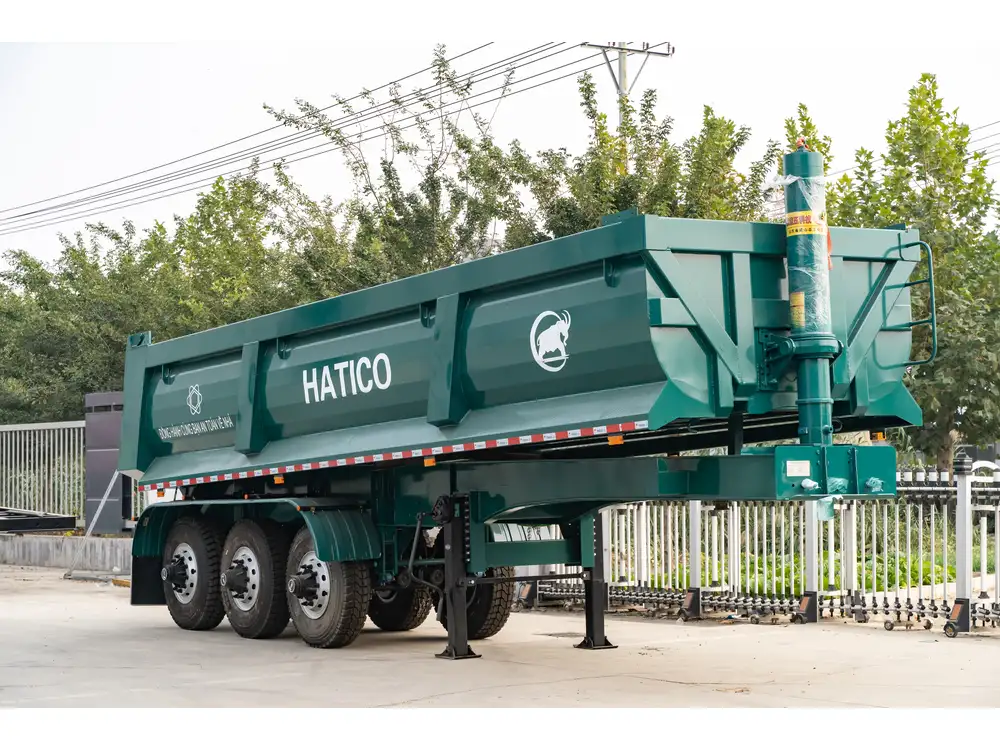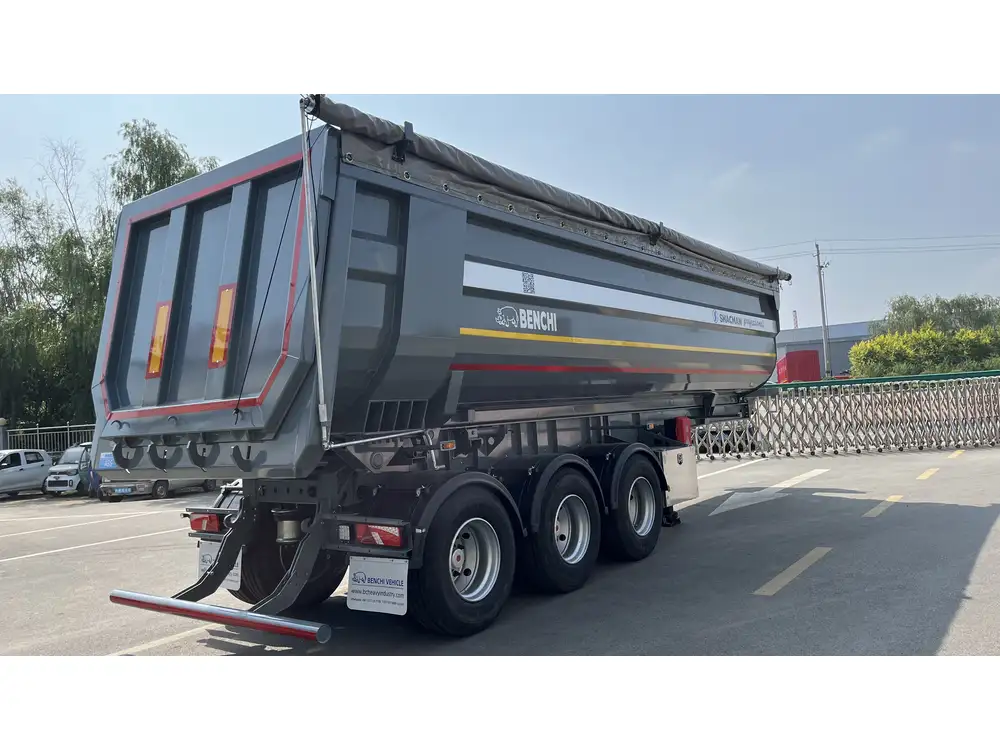In the realm of transportation logistics, the efficiency and safety of cargo transportation hinge significantly on the quality and reliability of equipment used, particularly flatbed trailers. Within these sturdy frameworks, cradles play a pivotal role in securing loads, ensuring stability, and facilitating safer hauls. This article delves deep into the world of cradle design and manufacturing for flatbed trailers, providing insights into who constructs these essential components, their functionalities, and how to determine the best suppliers.
Understanding the Functionality of Cradles in Flatbed Trailers
Cradles are specialized structures affixed to flatbed trailers designed to secure a variety of loads, from heavy machinery to delicate materials. The primary functions of cradles include:
- Load Stability: Cradles create a stable base that minimizes the movement of transported goods, critical for fragile or oversized items.
- Ease of Loading and Unloading: A well-designed cradle simplifies the process of securing and releasing loads, thus enhancing operational efficiency.
- Safety Features: Quality cradles often incorporate safety elements, such as tie-down points or integrated ramps, to bolster the securement process.
Understanding these functionalities allows fleet managers and operators to prioritize essential features when selecting cradles for their flatbed trailers.
Types of Cradles Available for Flatbed Trailers
The market presents various types of cradles tailored to different applications. Here are some prominent types that stand out:
| Type | Description | Ideal Use Case |
|---|---|---|
| Standard Cradle | Basic design suitable for general loads | Commonly used for pallets and lightweight cargo |
| Heavy-Duty Cradle | Reinforced structures suitable for heavy machinery | Ideal for transporting construction equipment |
| Adjustable Cradle | Flexible designs that can be configured for various loads | Versatile for companies with diverse cargo needs |
| Custom Cradle | Tailored designs created according to specific requirements | Provides bespoke solutions for unusual load shapes |
Each type of cradle offers unique advantages, ultimately influencing the decision-making process when purchasing flatbed trailers.

Leading Manufacturers of Cradles for Flatbed Trailers
Overview of the Manufacturing Landscape
The manufacturing of cradles for flatbed trailers follows specific trends characterized by innovation and competition. The best manufacturers prioritize high-quality materials, advanced engineering techniques, and compliance with safety standards. The following provides a detailed look at some of the leading names in cradle manufacturing:
Wilson Trailer Company
- Specialties: Known for innovative designs and quality construction.
- Products: Offers a range of cradles, especially for specialized transport.
Utility Trailer Manufacturing Company
- Specialties: A pioneer in manufacturing trailers with a focus on weight reduction and efficient cargo transportation.
- Products: Provides customizable cradle solutions that cater to diverse industries.
Great Dane Trailers
- Specialties: Robust trailers equipped with innovative cradle designs to support heavy-duty transport.
- Products: Widely used in commercial shipping and logistics.
Fruehauf Trailer Corporation
- Specialties: Offers cradles that comply with stringent safety standards and cater to customized needs.
- Products: Known for heavy-duty applications, particularly in freight transport.
Wabash National Corporation
- Specialties: Focus on lightweight trailers without compromising on strength.
- Products: Versatile cradle designs that work effectively with efficient loading systems.
Factors Influencing Manufacturer Selection
When selecting a manufacturer for cradles for flatbed trailers, it is critical to consider several factors that transcend mere price:
- Material Quality: Durable, rust-resistant materials such as high-grade steel or aluminum alloy significantly impact lifespan and performance.
- Design Efficiency: Innovative designs that facilitate quick loading/unloading can enhance productivity.
- Customization Options: Manufacturers offering tailored solutions can better meet specific industry needs and operational requirements.
- Customer Support and Warranty: Reliable after-sales support and warranty services protect your investment and ensure peace of mind.

Cradle Design Considerations
Design plays a vital role in the performance and safety of cradles for flatbed trailers. Here are essential design considerations for optimal performance:
Material Strength
Choosing the right material is crucial to ensure the cradle can withstand varying weights and environmental stressors. Common materials include:
- High-Strength Steel: Offers durability and rigidity, ideal for heavy loads.
- Aluminum Alloys: Lightweight and resistant to corrosion, suitable for medium-duty applications.
Load Capacity
It’s imperative to assess the load capacity required. This factor will dictate the type of cradle needed, ensuring it is fit for the intended transport tasks.

Safety Features
Innovations in safety features are paramount. Look for cradles with:
- Integrated Tie-Down Points: To facilitate secure load anchoring.
- Non-Slip Surfaces: Reduces the chance of load shift during transport.
- Reflective Markings: Enhances visibility during nighttime or low-light conditions.
Adaptability
Investing in adjustable cradles allows for versatility across different transport needs, accommodating various cargo shapes and weights.
Installation and Maintenance of Cradles

Installation Process
Proper installation is vital to achieving optimal performance from cradles. Factors to take note of include:
- Alignment: Ensure the cradle aligns perfectly with the flatbed to prevent any misplacement during loading.
- Securing Mechanisms: Verify that all hooks, locks, and latches operate smoothly to guarantee load security.
- Regular Testing: After installation, conduct load tests to ascertain the cradle’s stability and strength.
Maintenance Protocols
To prolong the lifespan of cradles and flatbed trailers, regular maintenance routines should be established. Key maintenance tasks include:
- Visual Inspections: Regularly check for wear, tear, or damage to materials.
- Lubrication of Moving Parts: Ensures smooth operations and prevents rust accumulation.
- Periodic Load Testing: Helps verify that the cradle can handle designated loads without failure.
Conclusion: Ensuring Dependable and Safe Transport
The quest for high-quality cradles for flatbed trailers represents a microcosm of broader concerns in the transportation industry—a commitment to reliability, safety, and efficiency. By understanding the market, acknowledging the pivotal role of design and materials, and engaging with reputable manufacturers, you hold the key to enhancing operational success in your transportation endeavors. Our comprehensive guide, rich in detail and structured for clarity, empowers fleet managers and operators alike in making informed decisions that sharpen their competitive edge in the industry.

Call to Action
In conclusion, if you are in the market for high-quality cradles for flatbed trailers and wish to streamline your operations, reach out to leading manufacturers today. Assess your specific needs, and don’t hesitate to ask about customization options that can significantly enhance the safety and efficiency of your transportation processes. A well-chosen cradle can make the difference between success and complications in your logistics chain. Secure your load with a cradle that illustrates not only strength but also the sophistication of modern engineering in the transportation industry.



